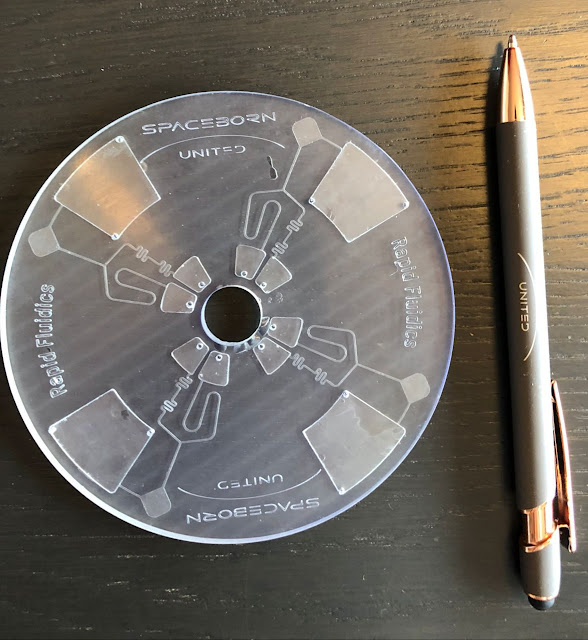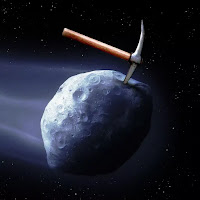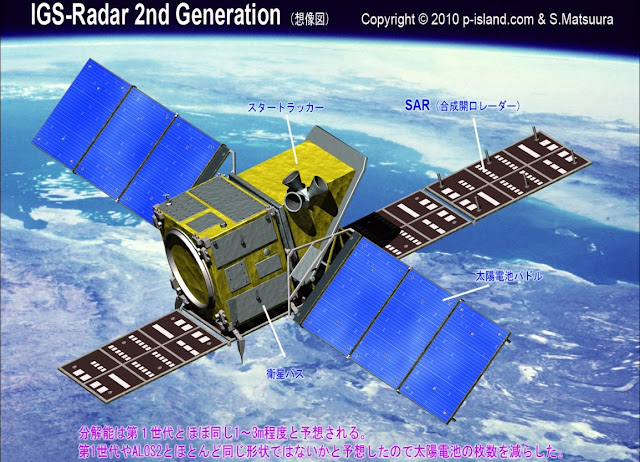SpaceX - Dragon Crew-6 Mission patch.
Jan 27. 2023
A new set of four crew members are preparing to launch to the International Space Station as part of NASA’s SpaceX Crew-6 mission.
NASA astronauts Stephen Bowen and Warren "Woody" Hoburg, as well as UAE (United Arab Emirates) astronaut Sultan Alneyadi, and Roscosmos cosmonaut Andrey Fedyaev, will lift off from Launch Complex 39A at NASA’s Kennedy Space Center in Florida to perform science, technology demonstrations, and maintenance activities aboard the microgravity laboratory.

Image above: The four SpaceX Crew-6 crew members pose for a photo. on the crew access arm at NASA's Kennedy Space Center's Launch Pad 39A in Florida. Image Credit: SpaceX.
The flight is the sixth crew rotation mission with SpaceX to station, and the seventh flight of Dragon with people as part of NASA’s Commercial Crew Program. Bowen and Hoburg were assigned to the Crew-6 mission in December 2021 and began working and training for their flight on SpaceX’s human spacecraft and their stay aboard the space station. Fedyaev and Alneyadi were added as the third and fourth crew members in July 2022. Crew-6 will spend up to six months at the space station before returning to Earth.
The international crew will fly aboard the SpaceX Dragon Endeavour spacecraft, which previously flew NASA’s Crew-1, Inspiration4, and Axiom Mission-1 astronauts. As part of the refurbishment process, teams are installing new components, including the heat shield, nosecone, trunk and all forward bulkhead and service section Draco engines. These hardware components help the spacecraft withstand reentry heat, support docking and cargo space, and provide steering and thrust to the spacecraft. Previously flown components include pod panels from a previous human spaceflight mission.
As teams progress through Dragon milestones for Crew-6, they also are preparing a first-flight Falcon 9 booster for the mission. Once all rocket and spacecraft system checkouts are complete and all components are certified for flight, teams will mate Dragon to the Falcon 9 rocket in SpaceX’s hangar at the launch site. The integrated spacecraft and rocket will then be rolled to the pad and raised to vertical for an integrated static fire test and dry dress rehearsal with the crew prior to launch.
The Crew
This will be Bowen’s fourth trip into space as a veteran of three space shuttle missions: STS-126 in 2008, STS-132 in 2010, and STS-133 in 2011. Bowen has logged more than 40 days in space, including 47 hours, 18 minutes during seven spacewalks. As mission commander, he will be responsible for all phases of flight, from launch to re-entry. He will serve as an Expedition 69 flight engineer aboard the station.
Bowen was born in Cohasset, Massachusetts. He holds a bachelor’s degree in electrical engineering from the United States Naval Academy in Annapolis, Maryland, and a master’s degree in ocean engineering from the Joint Program in Applied Ocean Science and Engineering offered by Massachusetts Institute of Technology (MIT) in Cambridge, Massachusetts, and Woods Hole Oceanographic Institution in Falmouth, Massachusetts. In July 2000, Bowen became the first submarine officer selected as an astronaut by NASA.
The mission will be Hoburg’s first flight since his selection as an astronaut in 2017. As pilot, he will be responsible for spacecraft systems and performance. Aboard the station, he will serve as an Expedition 69 flight engineer.
Hoburg is from Pittsburgh, Pennsylvania. He earned a bachelor’s degree in aeronautics and astronautics from MIT and a doctorate in electrical engineering and computer science from the University of California, Berkeley. At the time of his selection as an astronaut, Hoburg was an assistant professor of aeronautics and astronautics at MIT. Hoburg's research focused on efficient methods for design of engineering systems. He also is a commercial pilot with instrument, single-engine, and multi-engine ratings. Follow @Astro_Woody on Twitter.
Alneyadi will be making his first trip to space, representing the Mohammed bin Rashid Space Center of the UAE. Alneyadi will be the first UAE astronaut to fly on a commercial spacecraft. Once aboard the station, he will become a flight engineer for Expedition 69. Follow @Astro_Alneyadi on Twitter.
Fedyaev will be making his first trip to space, and will also serve as a mission specialist, working to monitor the spacecraft during the dynamic launch and re-entry phases of flight. He will be a flight engineer for Expedition 69.

SpaceX Crew Dragon docking to ISS. Animation Credit: SpaceX
Mission Overview
Lifting off from Launch Pad 39A on a Falcon 9 rocket, Dragon Endeavour will accelerate its four passengers to approximately 17,500 mph, putting it on an intercept course with the space station.
Once in orbit, the crew and SpaceX mission control in Hawthorne, California, will monitor a series of automatic maneuvers that will guide Endeavour to the space-facing port of the station’s Harmony module. After several maneuvers to gradually raise its orbit, Endeavour will be in position to rendezvous and dock with its new home in orbit. The spacecraft is designed to dock autonomously, but the crew can take control and pilot manually, if necessary.
After docking, Crew-6 will be welcomed inside the station by the seven-member crew of Expedition 69. The astronauts of NASA's SpaceX Crew-5 mission will undock from the space station and splash down off the coast of Florida several days after Crew-6's arrival.
Crew-6 will conduct new and exciting scientific research to prepare for human exploration beyond low-Earth orbit and benefit life on Earth. Experiments will include studies of how particular materials burn in microgravity, tissue chip research on heart, brain, and cartilage functions, and an investigation that will collect microbial samples from the outside of the space station. These are just some of the more than 200 science experiments and technology demonstrations that will take place during their mission.
During their stay aboard the orbiting laboratory, Crew-6 will see the arrival of cargo spacecraft including the SpaceX Dragon and the Roscosmos Progress. Crew-6 also is expected to welcome the agency’s Boeing Crew Flight Test astronauts and the Axiom Mission-2 crew during their expedition.
At the conclusion of the mission, Dragon Endeavour will autonomously undock with the four crew members aboard, depart the space station and re-enter Earth’s atmosphere. After splashdown just off Florida’s coast, a SpaceX recovery vessel will pick up the crew, who will be helicoptered back to shore.
Commercial crew missions enable NASA to maximize use of the space station, where astronauts have lived and worked continuously for more than 22 years testing technologies, performing science, and developing the skills needed to operate future commercial destinations in low-Earth orbit and explore farther from Earth. Research conducted on the space station provides benefits for people on Earth and paves the way for future long-duration trips to the Moon and beyond through NASA’s Artemis missions.
Related links:
Expedition 68: https://www.nasa.gov/mission_pages/station/expeditions/expedition68/index.html
Expedition 69: https://www.nasa.gov/mission_pages/station/expeditions/future.html
Commercial Crew: https://www.nasa.gov/exploration/commercial/crew/index.html
International Space Station (ISS): https://www.nasa.gov/mission_pages/station/main/index.html
Image (mentioned), Text, Credits: NASA/Mark Garcia.
Greetings, Orbiter.ch










































